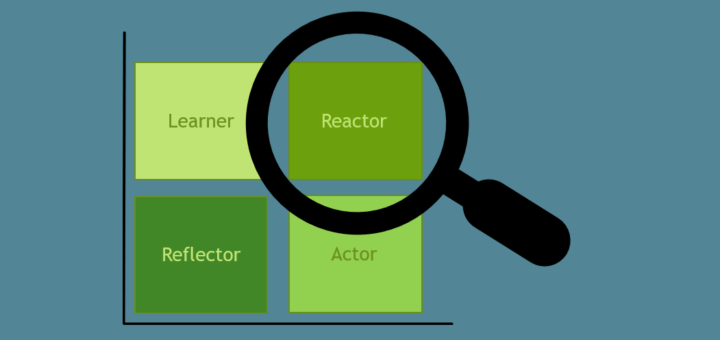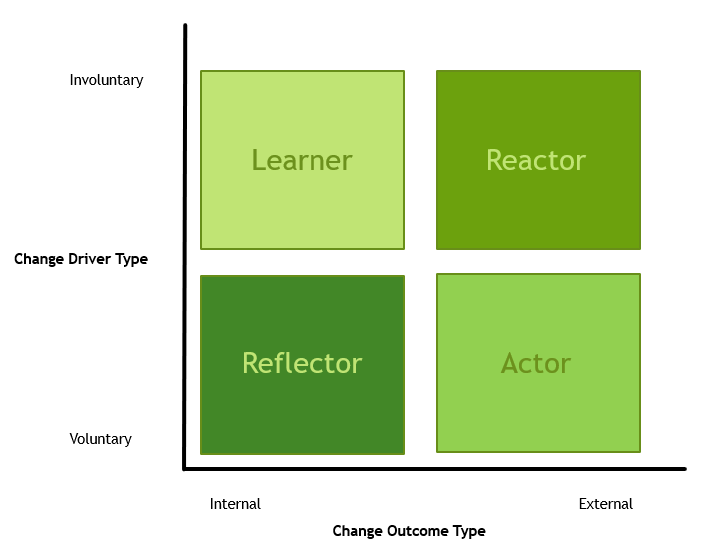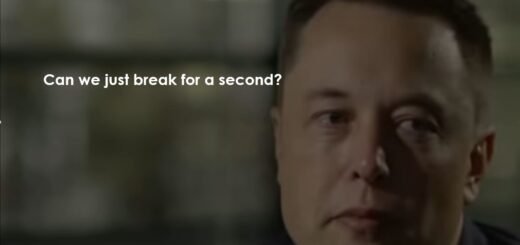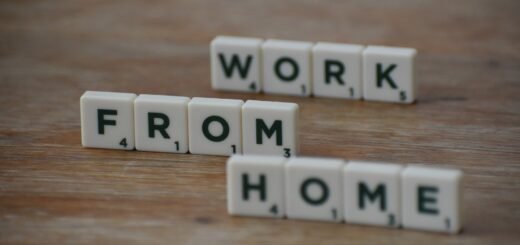Finding your Change Pattern

This article is part 2 of a 3-part series on the process of change
Part 1: The consistency of change
Part 2: Finding your Change Pattern?
Part 3: Taking the red pill
In the previous post, I shared how the current transformation models implicitly assume that change is universal, and everyone changes in the same manner. At the end of the post, I raised a question: Are we all really that similar when it comes to change? Do we all change the same way?
In order to find the answer, I decided to look at the interview data I gathered from a different perspective. I used my prior IT knowledge and observed the change process more holistically as a system, having inputs (drivers), outputs (outcomes) and internal processes1. This meant that instead of focusing, as previous change models did, on one big question: “How do we change?” (the process), I asked three questions: “Why do we change?”, “What changes?” and “How do we change?”
Drivers – Why do we change?
Research shows2 that change can be triggered by two drivers: (1) a personal decision to change (e.g., someone decides to quit her job), or (2) an external reaction to an event beyond our control (e.g., someone was fired). While in both cases, the result is the same (the loss of one’s job), the subjective experience of the situation is very different.
Using the metaphor of change as a chasm to be crossed, some participants shared stories of being pushed to cross the chasm (involuntary driver), while others shared stories of making a conscious choice to cross the chasm (voluntary driver).
Outcomes—What changes?
Similarly, there are two types of possible outcomes for change: internal and external. Borrowing from the previous metaphor of change as a chasm, participants who experienced an external outcome were focused outwardly on the actions, results, and events on the other side of the chasm. In contrast, participants who experienced an internal outcome were focused inwardly on the inner experience of crossing to the other side of the chasm.
The four Change Patterns
Crossing these two dimensions of driver type and outcome type reveals a new Change Patterns matrix (see Figure 1). On the vertical axis, drivers range from voluntary to involuntary. The horizontal axis represents the change process outcomes from internal to external. These dimensions represent a continuum of the change processes, and different change processes can be located anywhere within this bounded space.
Figure 1: A new Change Patterns matrix
This matrix also reveals four Change Patterns (see Figure 2):
- Learners
- Actors
- Reactors
- Reflectors
Figure 2: The four Change Patterns
- Learners
Learners are people that are driven to change by external events (such as being fired or experiencing loss). As this is an involuntary trigger, Learners often go through a humbling experience of lack of control or power. Being stripped from their ability to act, they retract inwardly and are then propelled to learn something new about themselves and the world they live in. Hence, as their sense of agency decreases, their inner learning grows.
Laura, an Executive Recruiter, age 49, has a clear tendency to use the Learner pattern. In this example she recalls the shock she experienced when she was fired from her job:
“It took me by total surprise. I remember being very upset… I felt that I was a failure. If I were better… if I had been smarter, if I had handled things differently, then this might not have happened.”
Later she shares her inner learnings from this experience:
“It’s a huge lesson when something like that happens… I guess [now] I’m just that person who… can recognize that shit happens and to be far less personal about the impact of it.”
- Actors
As opposed to Learners, Actors make a voluntary decision to change. Unlike the sudden shock experienced by Learners, Actors often go through a lengthy deliberation process before acting. As this process is based on one’s own volition, participants feel the need and the responsibility to process and gather enough information and evidence before voluntarily acting, knowing that their action may be disruptive to them and their surroundings.
Here is an example of Carrie, 48, who decided to quit her job in a multinational insurance company after 18 years. Note the long deliberation process and the need to explain (or justify) her reasoning that is so common to Actors:
“The analogy I had is that I used to be the good daughter of my bosses, and then I reached puberty, and I became more difficult to manage, and I had more and more of my own opinion, and that resulted in quite a few… frictions, and it made me quite angry and disappointed towards the organization as a whole, and I changed roles and [then] I made a bigger role change… I kind of grew into the understanding that it is not the right place for me anymore because I was still feeling quite critical, and I…felt like, you know, I don’t want to keep working in a place where there are so many moments when I feel so critical and so untrusting towards the organization as a whole…”
- Reactors
Reactors, like Learners, experience an involuntary driver for change. Yet, similar to Actors, they act outwardly. Reactors tend to experience their change process as a sudden event, feeling or realization that propels them to take immediate action to survive or preserve that which is most important to them: their loved ones, their integrity, or their most sacred values. Reactors often refrain from change until they can no longer sustain the current situation, and only then, when they reach their breaking point, go through a quick, short, and dramatic change pattern.
Emma, age 50, decided to leave her job of 27 years after being triggered by a cancer scare: “So that moment when I’m making carrot cake with my daughter, and I think: ‘well, if I have to go to radiotherapy or chemotherapy then I won’t have to go to work,’ it truly hit me here in the solar plexus. I had to go and sit down. I… Jesus, how unhappy am I, that I can find a silver lining in cancer?!”
- Reflectors
Reflectors are focused on inner learning; they voluntarily chose to go through a transformation in order to learn more about themselves during this process. Reverting to our earlier metaphor of change as a chasm3 : Learners are pushed towards the chasm and focus on the internal learning process as they cross it. Actors choose to cross the chasm while focusing on their goal on the other side. Reactors are pushed to quickly leap and get to the other side of the chasm, while Reflectors choose to cross the chasm to experience themselves as they cross it. They cross, not because they were pushed or to create an external outcome, but for the sake of the internal experience itself.
Here is an example of Paul, a 40 years old HR director, who shared his experience as a Reflector: “I found the job I was looking for, but I wasn’t sure…not if it was enough, but if it was everything I wanted. The question I asked myself is, what else am I missing… so I decided to just try to stop everything for a while, take a trip, travel around the world and reflect on life in general. “
A caveat
Although most people have a tendency to choose the same Change Pattern, there are some exceptions. Here is an example of Darren, 58 years old, who is an HR manager in a multinational bank. Darren uses the Actor pattern in his professional life, but when it comes to his health, he seems to lose that agency and reverts into a Learner. Here is what he shared during the interview:
“I have a lot of intrinsic confidence in my proficient abilities to deal with the challenges. I was able to prove it. But when it comes to my health, I was not confident that I could do that. At some point in time, I lost my confidence,”
later sharing his inner learning:
“I had to find inner balance, learning yoga and meditation, in this change process, I learned the importance of living a balanced life.”
The good, the bad and the ugly
When looking at this model, it is important to remember that one Change Pattern is not better or worse than the others. Each one could be good, bad and sometimes ugly.
For example, Actors are proactive, they push forward and initiate change, but they can also spend days, months and even years deliberating and weighing all possible options before moving forward. Some Actors may also be using this pattern as an escape route, continually moving from one place to another focusing outwardly, instead of stopping and allowing themselves to look for their answers internally.
Learners go deep inside themselves and gain wisdom every time they experience a change process, but they also tend to be more passive, waiting for life to “push” them in the right direction. As opposed to Actors who go through a lengthy thinking process before acting, Learners may go into long periods of self-accusation or denial, resentment, and bitterness after life has already nudged them forward.
Reactors act immediately and forcefully without much deliberation but sometimes use over-exaggerating and catastrophizing as a façade. This dramatic external driver allows them to justify moving forward, as when one is in a process of change, it is often easier to blame necessity over a voluntary decision.
And finally, Reflectors are very much in tune with themselves and their inner needs, yet they tend to get lost in their internal world, and outside of a spiritual setting may feel or be perceived as wishy-washy and impractical.
Now it is your turn
Do you already know which Change Pattern type you are? Actor, Learner, Reactor or Reflector?
For some people, it is evident, while others may need more time or external help. Yet without awareness of our Change Patterns, we are forever stuck. Once we realize our Change Pattern, we have the freedom of choice to either use our Change Pattern more effectively or choose different Change Patterns to align with the reality in front of us.
In these instances, I am reminded of the words of Deepak Chopra, the Indian-American doctor and author: “Awareness is all about restoring your freedom to choose what you want instead of what your past imposes on you.”
Are we stuck in our past patterns or can we actually free ourselves to choose the right Change Pattern in our current reality?
This post originally appeared here
In the next post, we will learn how to go even deeper and find our core underlying change themes in life.
Next Post: Taking the red pill – What is your Core Change Process Theme?
Resources and Appendix
1 My IT knowledge inspired me to create two change models based on two well-known testing procedures, the Black box and White box software testing methods. The former tests the input and outputs of the change process, and the latter examines the internal process of change itself and looks for consistencies and patterns.
2 Deci and Ryan (1987), The Support of Autonomy and the Control of Behavior.
3 A table depicting the characteristics of the Pattern Archetype and its process timeline.








